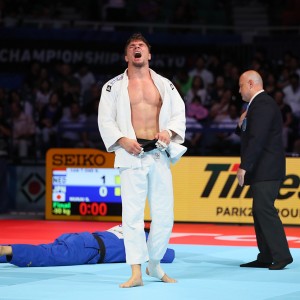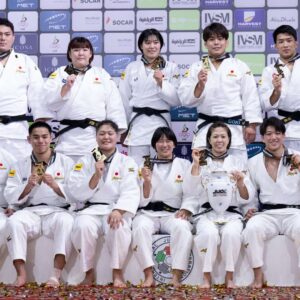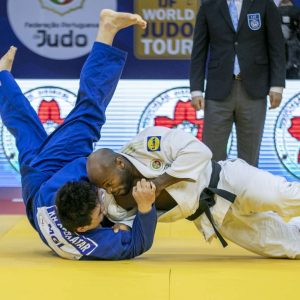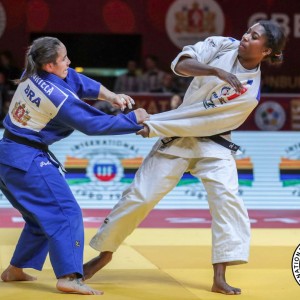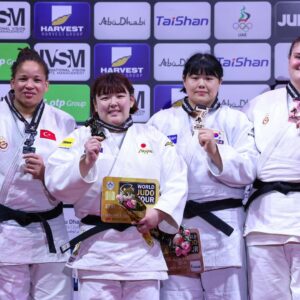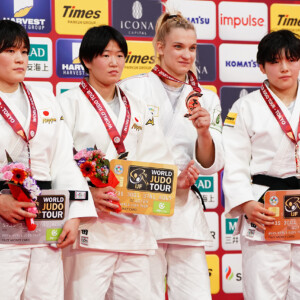[PREVIEW] All Japan Judo Championships Fukuoka 2023 Preview, WOMEN
by EJUDO, Japanese Judo website

Here is a preview article of the All Japan Judo Championships (From April 1st), Women’s. Please read it in conjunction with the Men’s.
-48kg
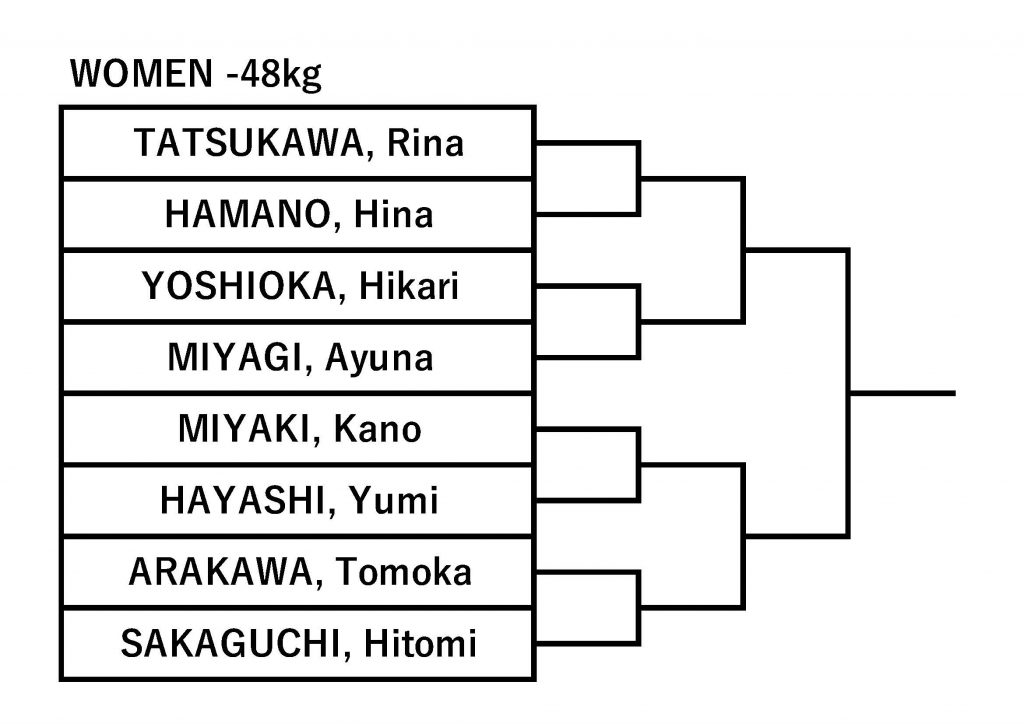
Tonaki will not participate; Miyaki and Tachikawa are the stars of this year’s tournament.
In this class, a generational shift is underway. This year’s competition featured a fresh lineup, with six of the eight contestants being young university students or younger. Tokyo Olympics silver medalist Funa Tonaki (Park24) was absent from this year’s event as well, perhaps still recovering from an injury. She has not competed since the Tashkent World Championships last October, making it very difficult for her to qualify for her second consecutive Olympics.
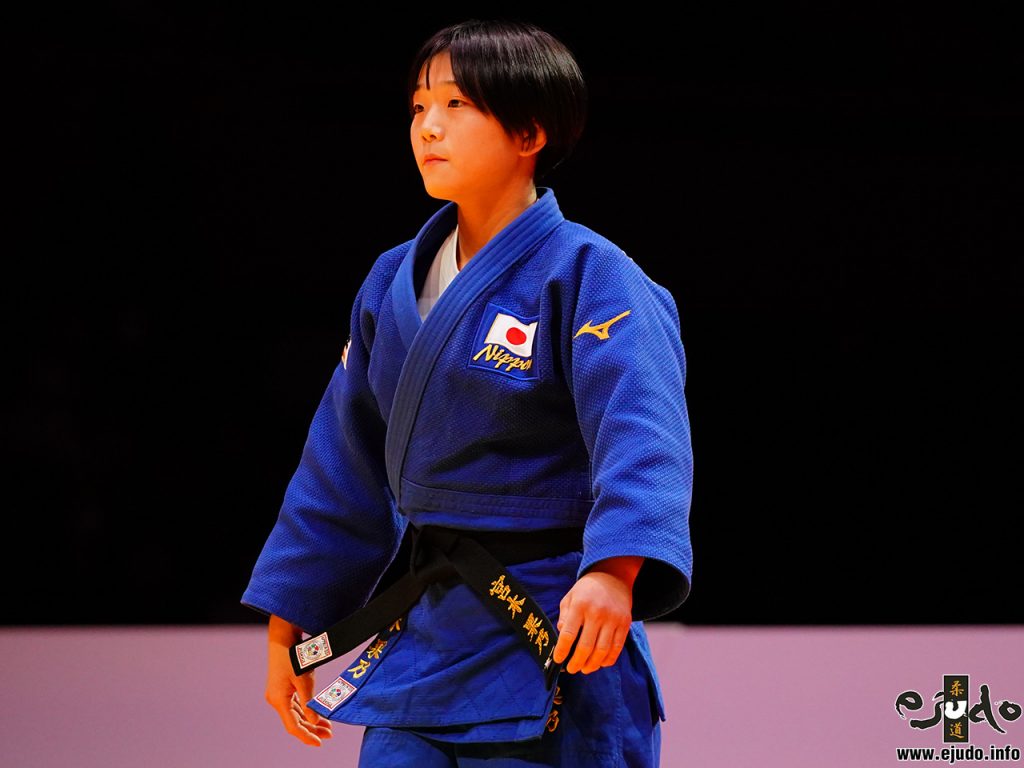
The favorites to win the championship are Rina Tatsukawa (Fukuoka Prefectural Police), the top seed, and Kano Miyaki (Shutoku High School), the second seed. Both of them are the best among the competitors, and will face each other in the finals. Their head-to-head record is 1 win and 1 loss. Tatsukawa won the Kodokan Cup last October, and Miyaki won the Grand Slam Tokyo in December. When fighting, the two fighters do not mesh at the distance they want. Tatsukawa is good at getting in close and pinning her opponent. Miyaki is good at seoinage and ashi-waza and wants to fight at a distance to make use of her technique. The match should proceed with a composition of the two extremes, with the side that first creates an advantage at the desired distance dominating the game overwhelmingly. As a preliminary prediction, we estimate that Miyaki, who is growing and will have grown even more since the Grand Slam Tokyo, will have the advantage.
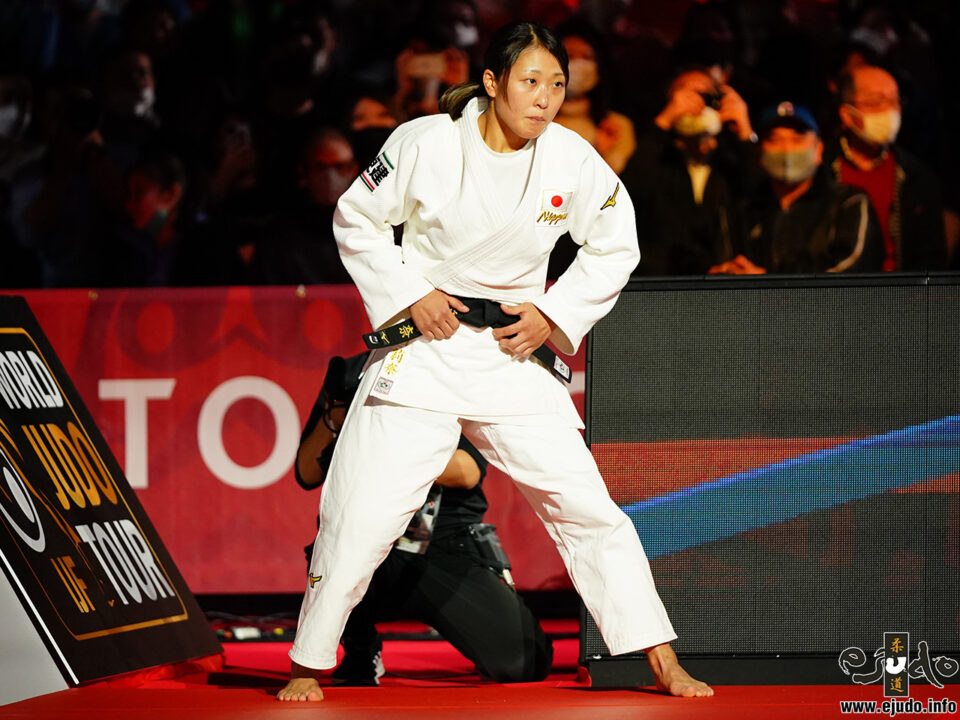
The draw is tougher for Tatsukawa. In the semifinals, Tatsukawa will face the winner of last year’s World Junior Champion Hikaru Yoshioka (Tokai University) and last year’s All-Japan Junior Champion Ayuna Miyagi (Meiji University of International Medicine). Both Yoshioka and Miyagi are good athletes whose weapons are the Seoinage and Sode-tsurikomi-goshi. In the semifinals, Tatsukawa is expected to win due to his superior strength, but considering the Miyagi match coming up next, she will want to get through this match with as little wear and tear as possible.
On the other hand, Miyaki, on the lower side of the tournament, has no difficult opponent. The winner of the first two games should win in good form and be ready for the final.
-52kg

Shime and Shiraishi’s semifinal will greatly influence the outlook for the final.
Ai Shishime (Ryotokuji Univ. staff), a two-time World Champion, was seeded first. The second seed was last year’s Kodokan Cup champion, Kishum Omori (Teikyo Univ.). These two, along with last year’s champion Hibiki Shiraishi (International Pacific University) and Nanako Tsubone (JSDF Physical Training School), who also won the tournament the year before last, make up the top four contenders for the championship.
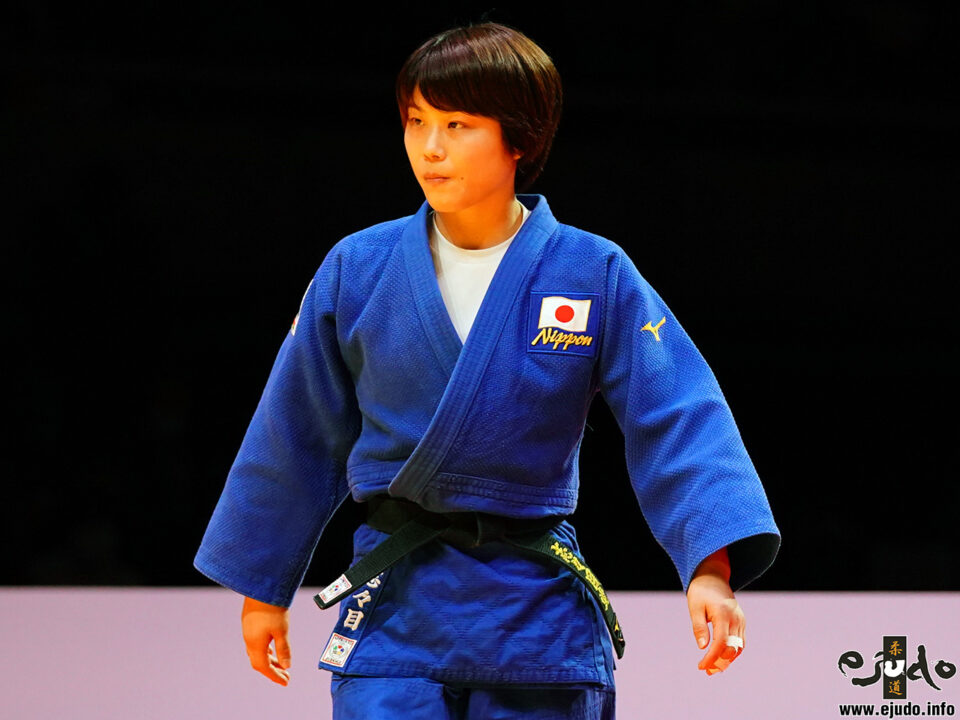
Shishime is the most likely winner. Although the power of her techniques may be waning somewhat, she has the skill and experience to compensate for this. She had to face all the other candidates in the tournament except herself. Tsubone in the first round, Shiraishi in the semifinals, and Omori in the finals.
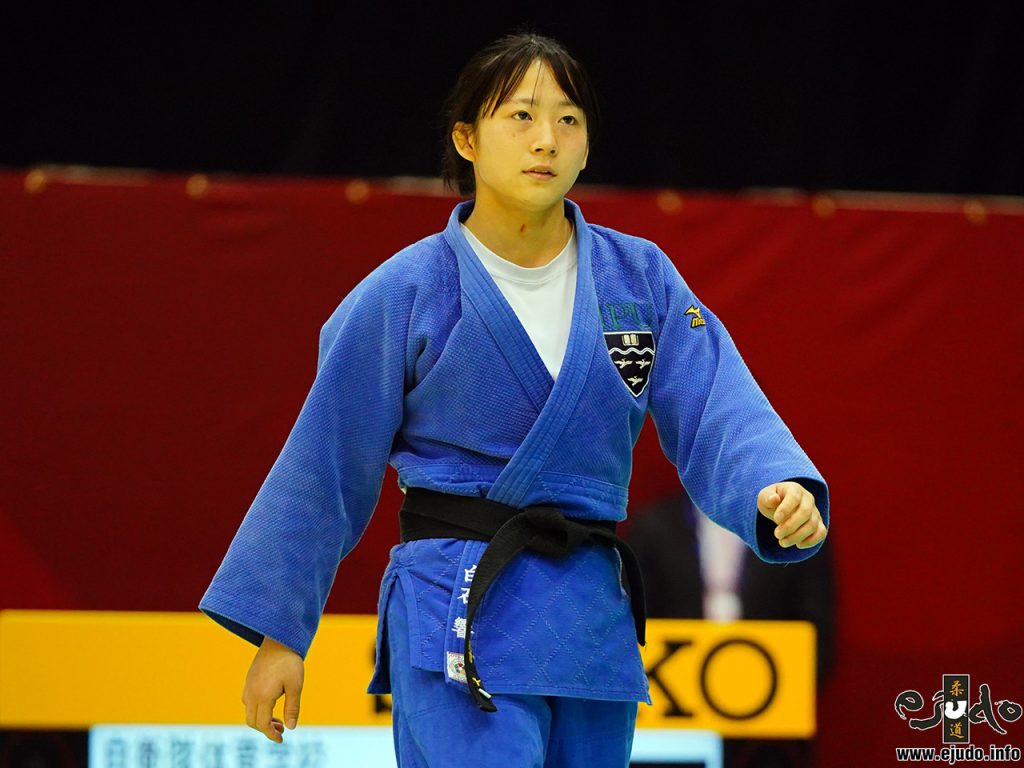
The biggest climax on the upper side of the tournament is the semifinal between Shime and Shiraishi. Shiraishi specializes in the Uchi-mata Sukashi, which is a tough opponent for Shishime, whose main strength is the Uchi-mata. In their direct confrontation in last year’s tournament, Shiraishi won by gaining an Uchi-mata-sukashi “waza-ari. Although it is difficult to predict Shiraishi’s condition since he is returning from an injury, it is probably safe to say that Shiraishi has the advantage again in terms of compatibility.
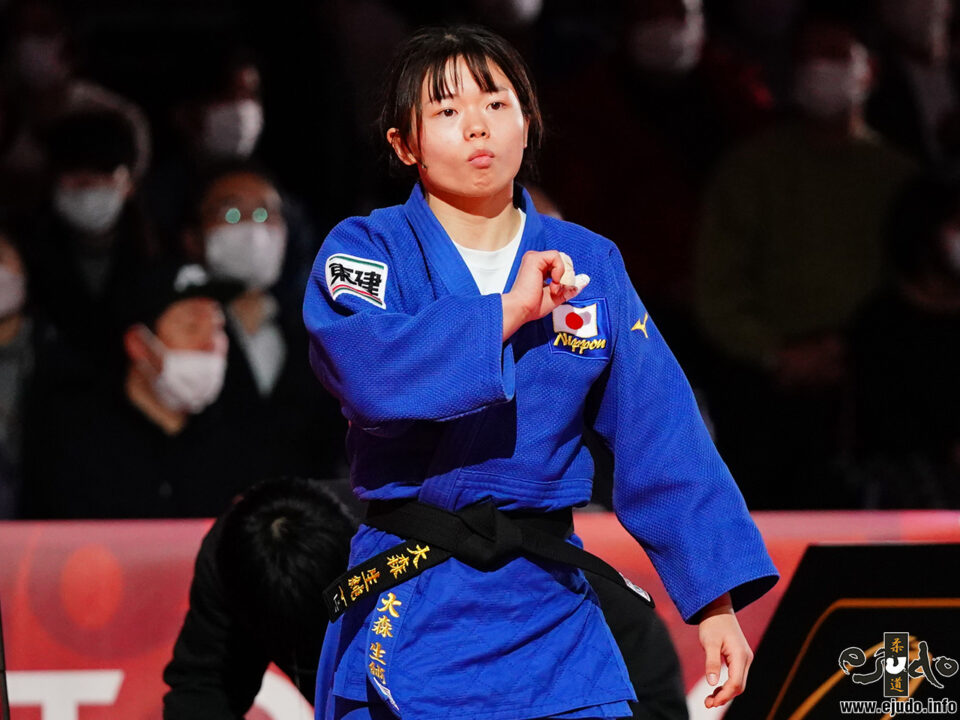
On the other hand, Omori is the clear winner on the lower side. Omori has the edge in terms of strength, and her signature technique, Ashi-guruma, is also quite destructive. In the semifinals, Omori is expected to face Yokota Hikari (sSaku Chosei High School), who competed in the final of last year’s Kodokan Cup, but judging from their matches at that tournament and the Grand Slam Tokyo, Omori is likely to win again.
If things go in order, the final will be Shishime vs. Omori. Omori, with her straightforward judo, seems to be a relatively easy opponent for Shishime to fight, and in this combination, Shishime has the advantage. On the other hand, if Shiraishi wins the upper side of the tournament and face Omori, Omori’s superior strength pressure will come into play, and we expect Omori to have the advantage.
-57kg
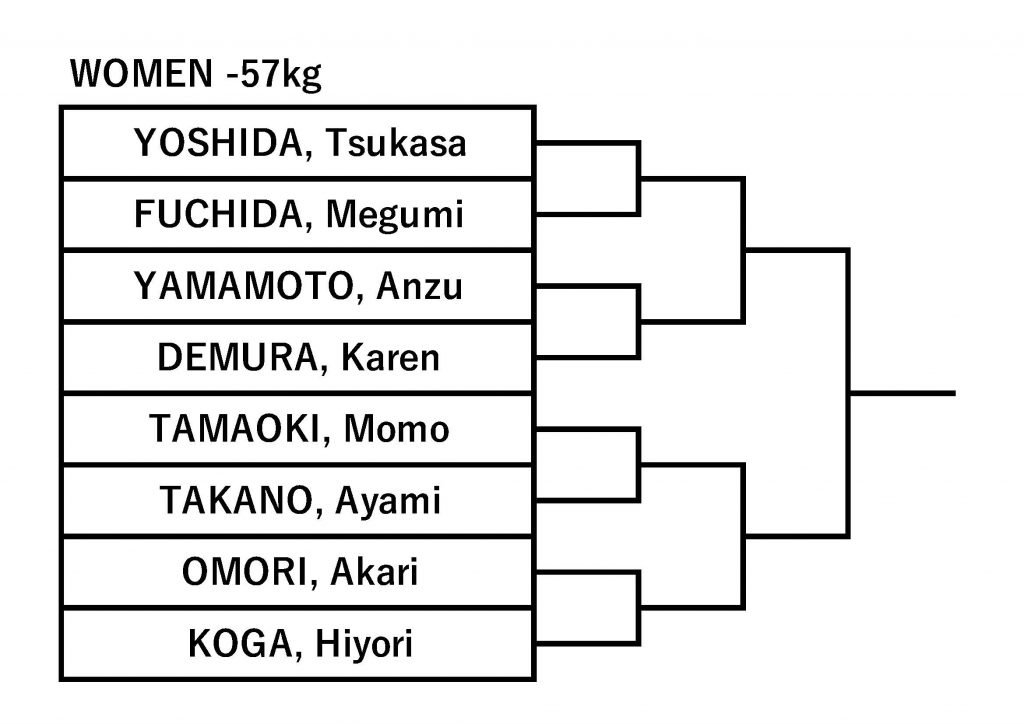
Yoshida and Tamaoki are likely to face off in the final.
Tsukasa Yoshida (Komatsu), bronze medalist at the Tokyo Olympics, and Momo Tamaoki (Mitsui Sumitomo Insurance), runner-up at the 2021 World Championships in Hungary, are the favorites. If all goes well, a final between the two is likely.
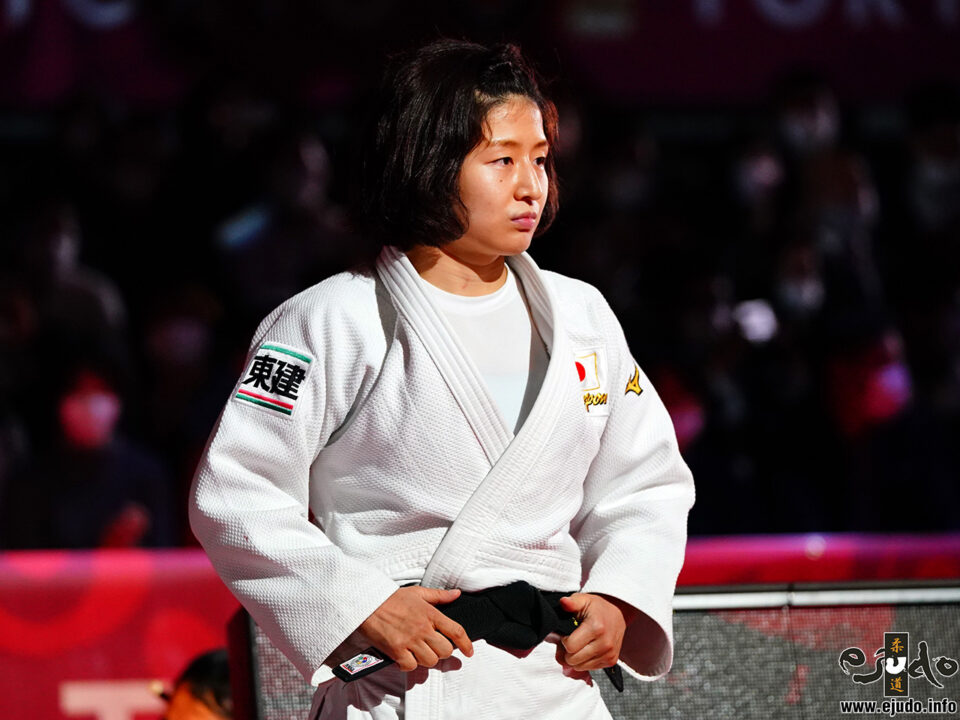
Yoshida and Tamaoki are rivals who have faced each other many times before. At the last year’s Kodokan Cup, Tamaoki won by 3 times Shido, and at the Grand Slam Tokyo, Yoshida won by Ippon with Uchimata. However, Yoshida has no other way to win except by scoring throwing points with her techniques, while Tamaoki has the advantage in terms of compatibility because she can aim for a win with a 3 times Shido by attacking in succession and by attacking first. In general, we expect Tamaoki to have the upper hand in this match.
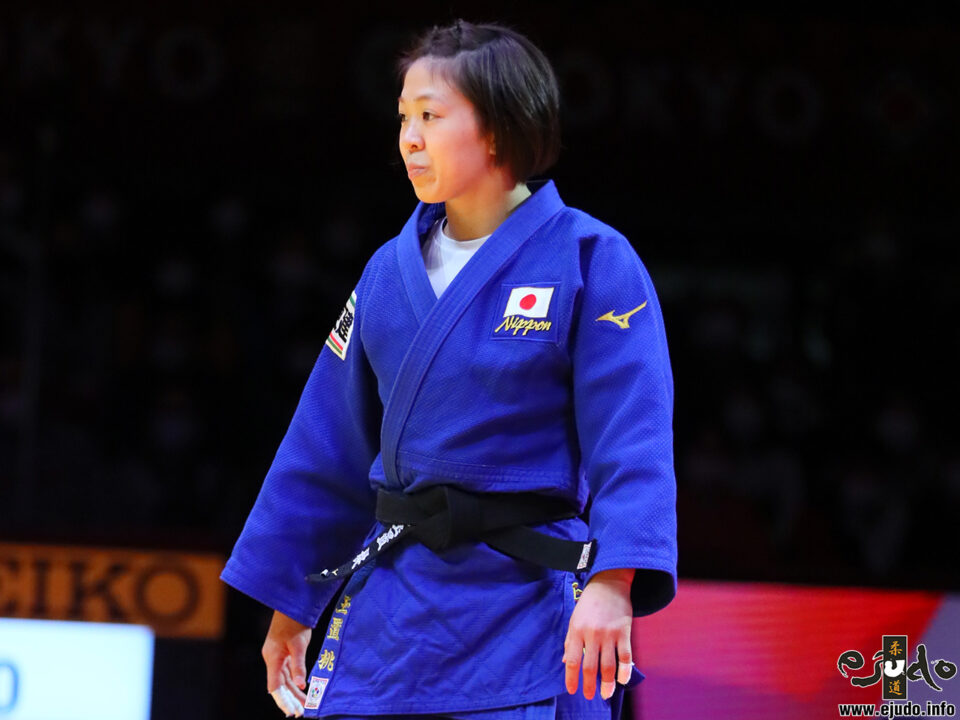
Both of these two will face strong opponents in the semifinals. Yoshida will be facing Anzu Yamamoto (Park24), and Tamaoki will be facing Akari Omori (Teikyo University,). This match should give us a good gauge of the day’s condition of both players.
Yoshida’s performance has been inconsistent since the Tokyo Olympics. Although her movement itself is not bad, there have been an increasing number of occasions where she has lost matches due to obvious tactical errors, as in her match against Daria Bilodid (UKR) at the Grand Slam Tel Aviv in February. Yoshida tends to attract attention for her flashy throwing techniques, but this is supported by her careful kumite and ne-waza, which are based on the basics. Yoshida’s fights during her rise to prominence were based on the fact that she had a solid foundation in these basic tactics and could see the proper route to take on that foundation. This structure has now collapsed. We will be watching the match to see if she is able to return to this starting point
-63kg

Nabekura is the favorite to win the mixed tournament.
The two main contenders for the championship were Nami Nabekura (Ryotokuji Univ.), who finished second in last year’s tournament, and Seiko Watanabe (Metropolitan Police Dept.), who finished second in the Kodokan Cup. Nabekura and Watanabe were seeded first and second, respectively. These two, plus Masako Doi (JR East) and Nana Koda (JSDF Physical Training School), make a total of four possible winners. There is no significant difference in ability among the players, and the tournament may be defined as a mixed competition.
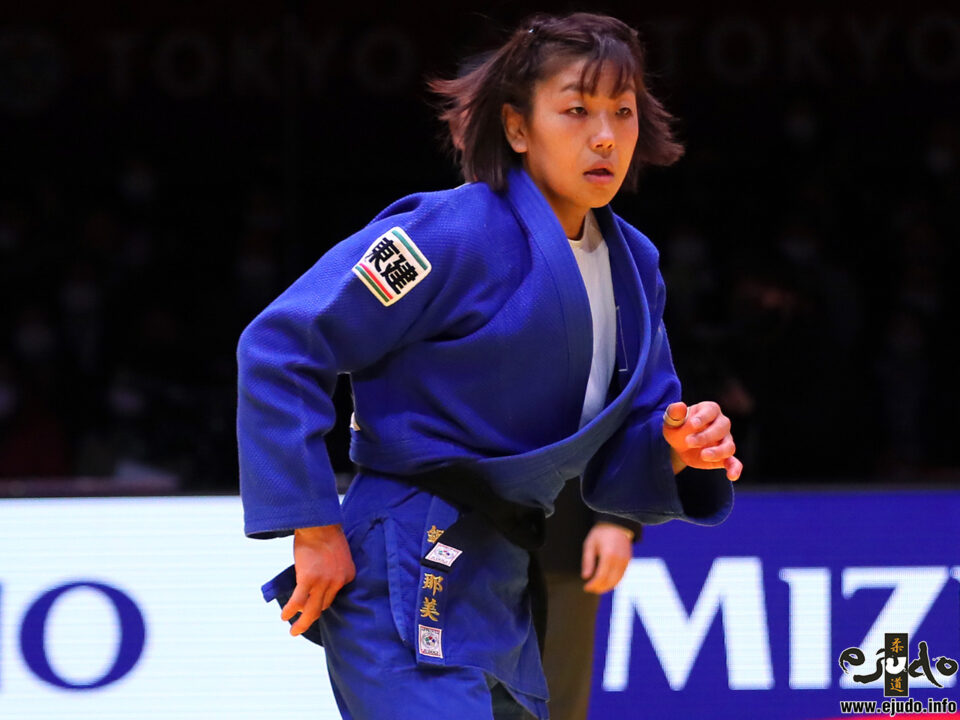
The tournament is weighted more heavily toward the upper side. It is a tough arrangement with three of the above four players packed in. First, Doi and Koda are scheduled to face each other in the first round, and the winner of that match will face Nabekura in the semifinals. Doi and Koda both have a style that focuses on Newaza, but Doi is more skilled than Koda, as seen in their past fights. Doi also has the advantage in terms of strength, and we expect Doi to win this matchup. The most recent meeting between Nabekura and Doi took place in the final of the Grand Slam Paris last February, which Nabekura won by 3 times Shido. Doi’s main source of scoring points is in the newaza, an area in which Nabekura is also very good. It is unlikely that the match will be decided in the newaza, and Nabekura will have the advantage due to her superior skill in the standing techniques. Doi will be looking to use her stamina to reduce his opponent’s strength and wait for her chance.
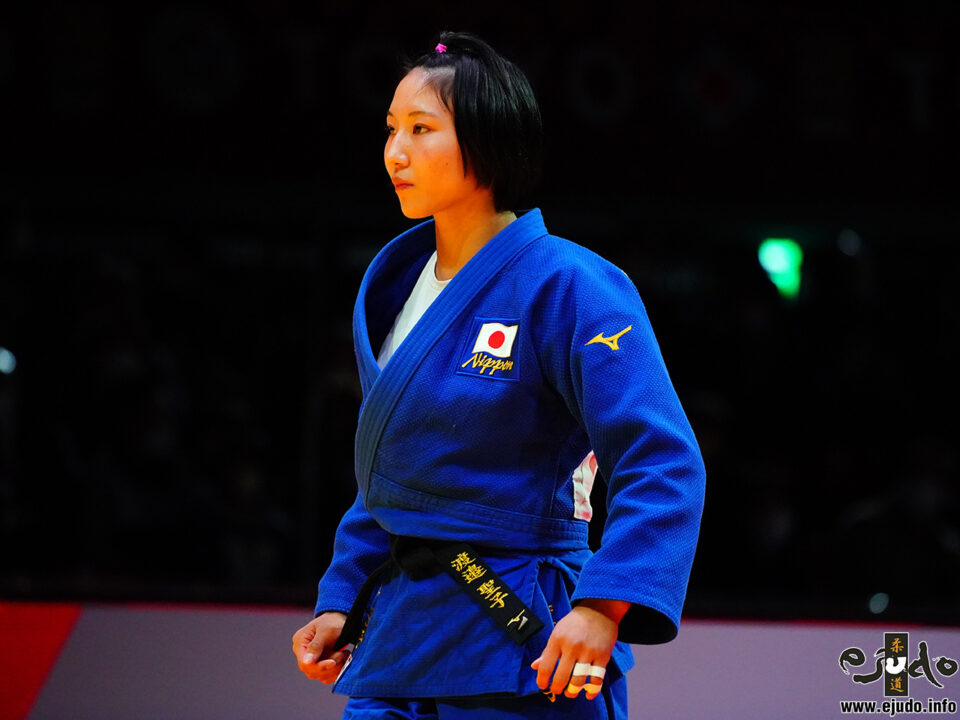
On the other hand, there are no other top-ranked fighters in Japan in the lower part of the tournament other than Watanabe, and we should expect Watanabe to win according to the pecking order. She has the edge in terms of strength and kumite skills, and should be able to take full advantage of the pressure of her signature kumite in both the first round and the semifinals.
In the final between Nabekura and Watanabe, We expect Nabekura to have the advantage in terms of tactical chemistry. Nabekura has a variety of Tsurite positions, from one sleeve to the back, in which to execute her thowing techniques. On the other hand, Watanabe can only apply pressure by gaining the sleeves and lapel behind the neck (Oku-eri), which is the premise of her judo.If this is broken, it is difficult to find a way to win. Nabekura would pull the match along by continuing to apply techniques even from seemingly inadequate positions.
*Watanabe cancelled her entry on March 30, due to an injury.
-70kg

Tanaka, who is making hers return to competition, is the favorite to win. However, her condition is hard to predict.
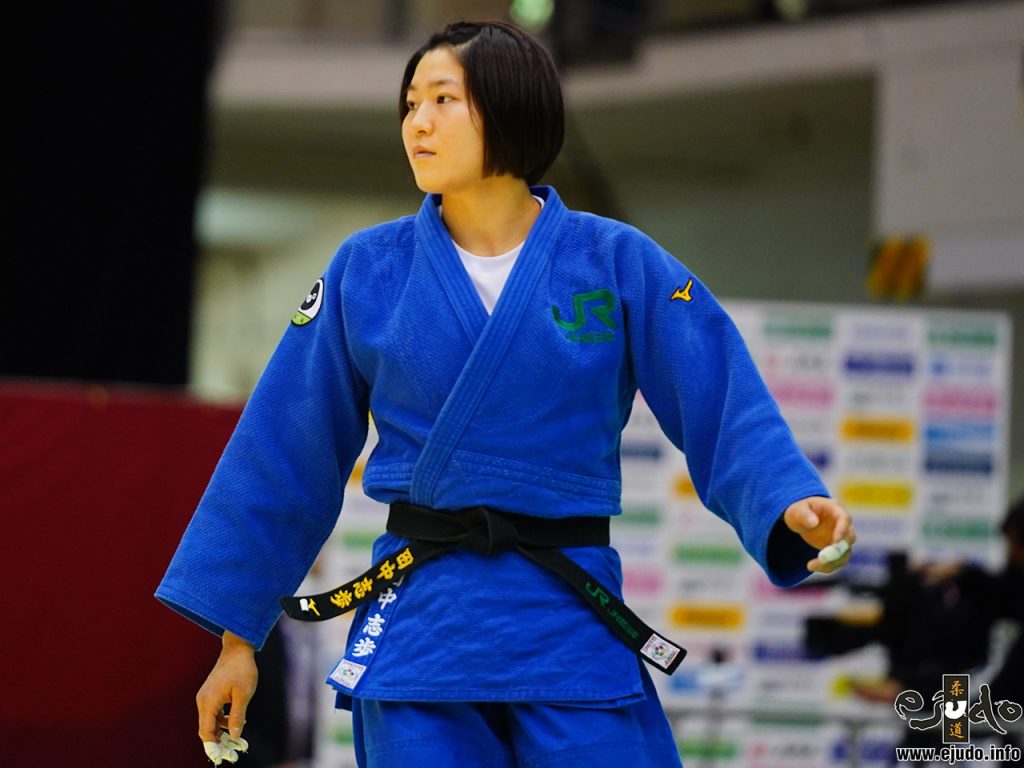
The first seed, Shiho Tanaka (JR East), is the favorite to win. She is far ahead of the other contestants based on her past performance. If her physical condition is above average, we consider her to be a solid winner. However, Tanaka injured her right knee at the Tashkent World Championships last October. She has not competed since then, and this tournament will be her return to competition. The knee must have been quite serious, and we can only add the caveat that it is difficult to predict her condition from the outside this time. The possibility is that she could lose the tournament in the early rounds. And in this case the tournament would be a mess.
The tournament is divided into upper and lower sections with a good balance of strong players, and there is almost no difference in the difficulty of winning depending on the placement.
Tanaka, on the upper side of the mountain, will face the winner of Erina Ike (MIKI HOUSE) in the first round and the winner of Riho Saiganji (Komatsu) or Junna Tada (Yamanashi Gakuin University) in the semi-finals. Ike is a technical fighter whose main focus is strict kumite and Seoinage, and we expect Tanaka to be difficult to conquer if she is not in her best form. This match against Ike should provide a measure of how well Tanaka is recovering. Both of Tanaka’s opponents in the semifinals are judo players with a firm two-handed grip, so they are not difficult opponents for Tanaka. If Tanaka is in good enough condition to advance semifinals , she is sure to win.

On the other hand, Moka Kuwagata (Mitsui Sumitomo Insurance) is likely to win from the lower side. Kuwagata’s basic strategy these days is to stick to the game by repeatedly using the Seoinage techniques, but none of her opponents has a concrete solution to this strategy.
In the final between Tanaka and Kuwagata, Tanaka usually has the advantage. Tanaka has stamina and has specific methods to counter attacks that require a large number of moves, such as Kata-guruma and one-hand Seoinage. Kuwagata’s signature tactics are unlikely to work against Tanaka. However, Tanaka is not good at judging tactics and often makes mistakes in her choices during matches. Kuwagata would like to win at once on her chance without overlooking this.
-78kg
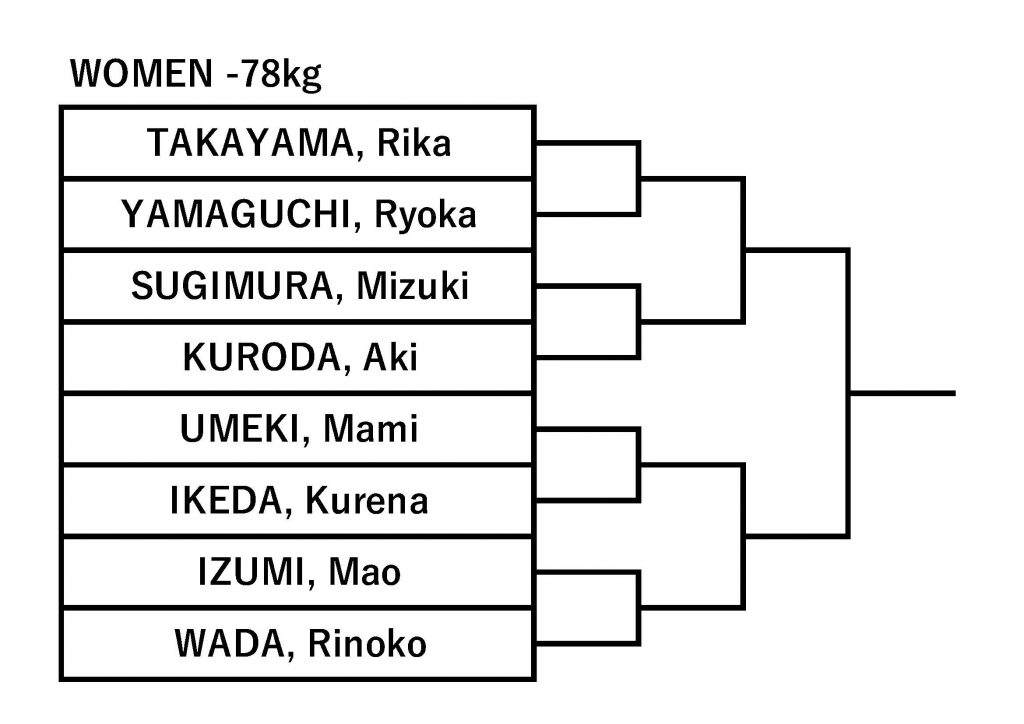
High-level lineup led by Takayama and Umeki
The favorites are Rika Takayama (Mitsui Sumitomo Insurance), the top seed and Kodokan Cup champion, and Mami Umeki (ALSOK), the second seed and 2015 Astana World Champion. These two, plus Mao Izumi (KOMATSU), are the three possible winners.
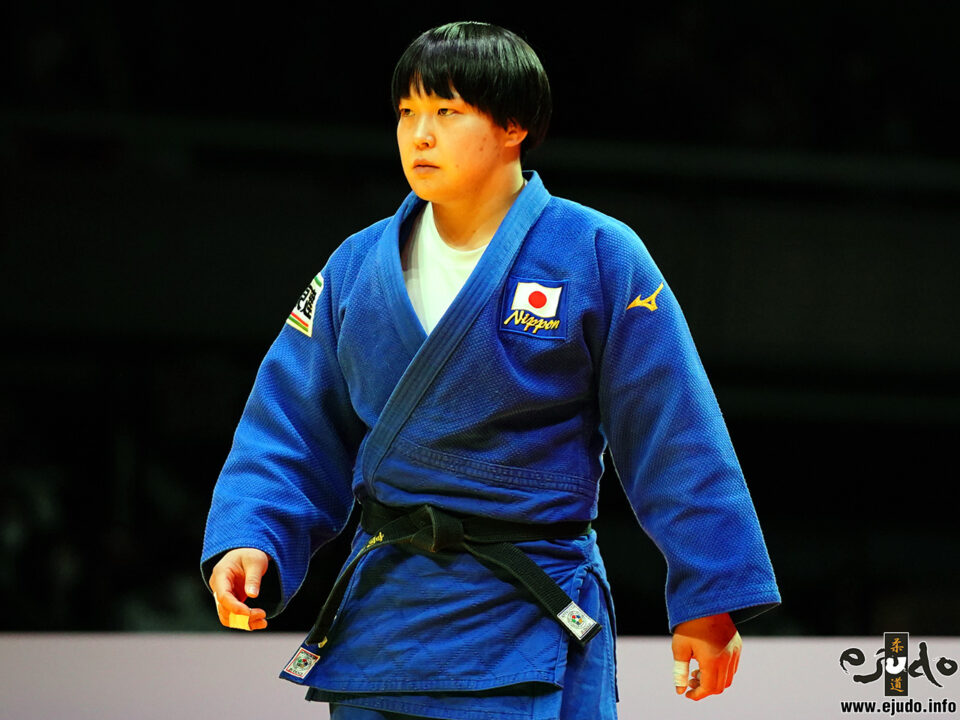
Depending on the results of the Doha World Championships in May, the three competitors in this event may have a chance to challenge for representives for the Olympic games. This tournament is very important.
In the pairings, Takayama was placed on the top side of the tournament, while Umeki and Izumi were placed on the bottom side. Takayama’s opponents are not the top players in Japan, and unless she makes a major mistake, she will likely advance to the finals. Takayama will be looking to minimize her physical exhaustion in order to win the tournament.
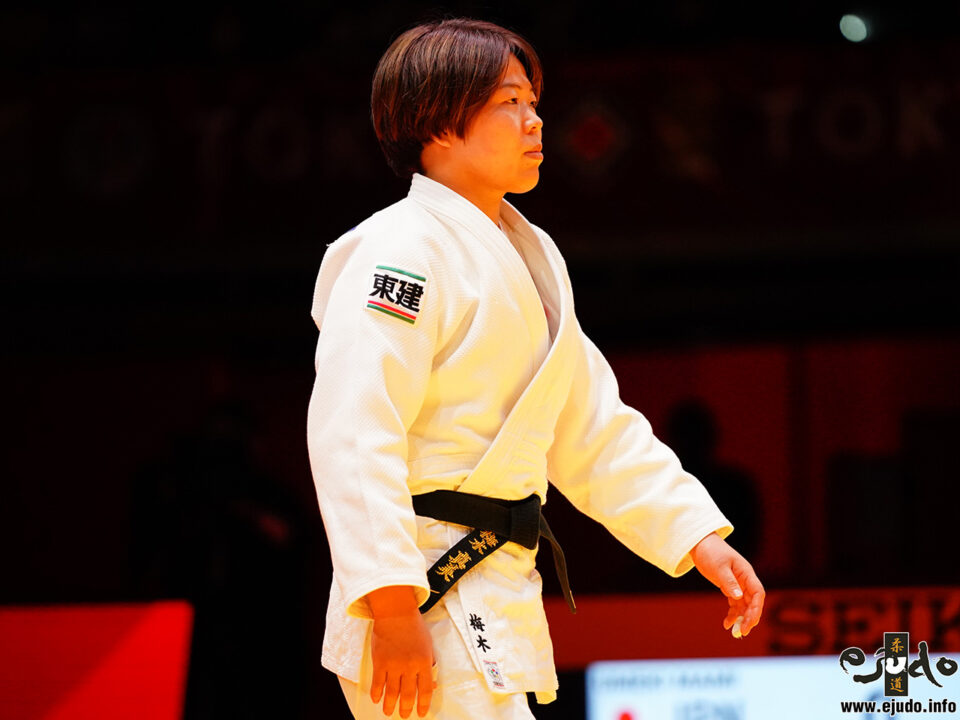
On the lower side of the tournament, Umeki and Izumi are likely to meet in the semifinals.
Both men base their strategy on gripping the judogi with both hands to immobilize the opponent. Umeki has a big advantage in this technique. Umeki also has the advantage in tactics and Newaza, and I predict a victory for Umeki. Izumi would like to find an opportunity to win in a close match where she can nullify her opponent’s skill.
Takayama vs. Umeki in the final: Takayama has the advantage in terms of chemistry. Takayama is skilled in the art of making the first move before her opponent completes Kumite, such as One-sleeve Seoinage and Tomoe-nage, making it difficult for Umeki to apply pressure, which is a prerequisite for her judo. In last year’s tournament, Takayama followed this structure to win the tournament with an ippon, a combination of Hikikomi-gaeshi and kamishiho-gatame. If both fighters continue with their normal routines, I predict a Takayama victory again this time. Umeki, for his part, would like to fight while blocking Takayama’s movements by using Ashi-waza in conjunction with kumite and by gripping firmly with both hands in advance.
+78kg

Tomita and Asahina’s semi-final is the biggest battleground; Akiba has the potential to swing the final.
The favorite to win the tournament is Wakaba Tomita (Komatsu), the top seed and a two-time consecutive winner of the tournament. She is one of the best among the contestants in terms of recent results. Her opponent is Sarah Asahina (Big Tree), a two-time World Champion. The pairings call for them to meet in the semifinals, which should be the de facto final.

However, while Tomita’s performance has been stable, Asahina’s has been fluctuating. Again, Asahina’s condition is hard to predict, as she lost to Ruri Takahashi (Yamanashi Gakuin Univ.) in the final of the Empress Cup Kanto Qualification Tournament in March on 3 times Shido. As you can see from the draw, Takahashi and Asahina is scheduled to play in the first round of the tournament. Asahina may even disappear in the first round depending on her condition. Even if she were to win, it would be difficult for her to defeat Tomita, as drawing an auxiliary line from her aforementioned condition in the Kanto preliminary round.
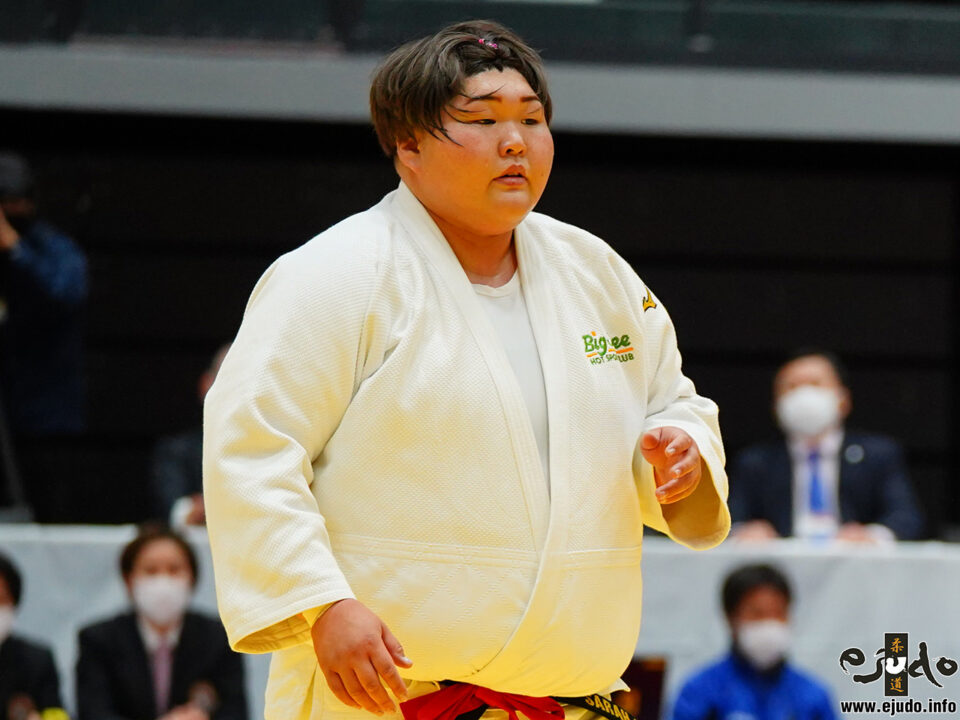
Looking at the tournament as a whole, Tomita is likely to win from the upper side. She will face Nami Inamori (Japan Ace Support) in the first round and the winner of the semifinal between Asahina and Takahashi, as mentioned above, which is a tough matchup, but we expect her to win.
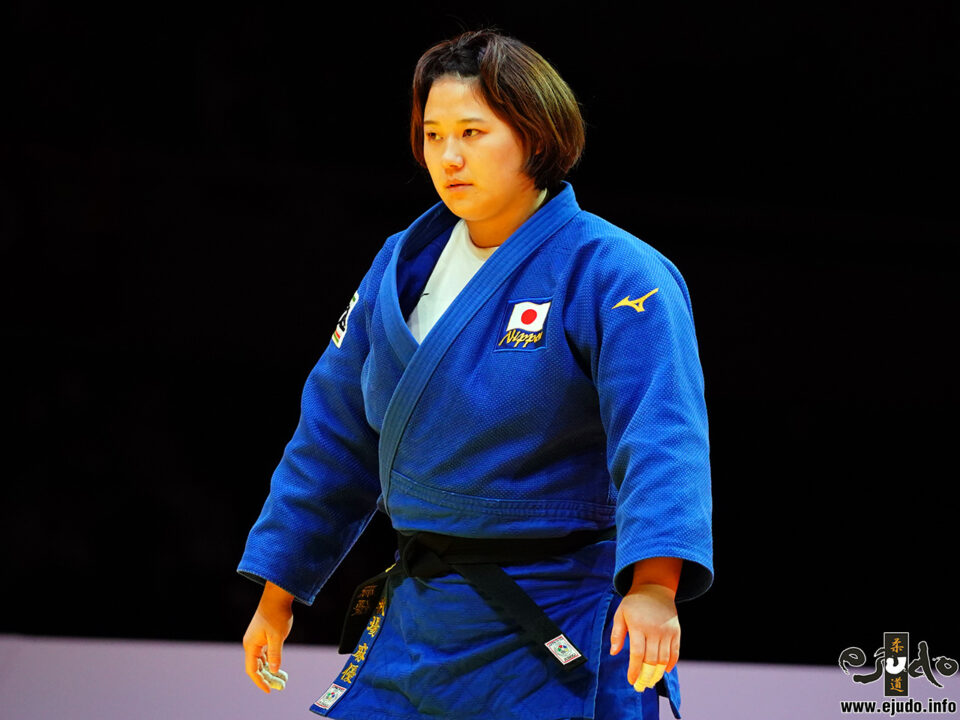
On the lower side, on the other hand, there is a crowded field, with last year’s Kodokan Cup champion Maya Akiba (ALSOK) and World Junior Champion Mao Arai (JNippon Sport Science University), and Hikaru Kodama (Tokai University) and Akemi Hashimoto (Komatsu), who will face each other in the first round, with the winners competing in the semi-finals. Kodama seems to have the edge in terms of overall strength, but depending on the conditions on the day, anyone could win. However, if everyone’s condition is average, we expect that Akiba, with his strong match-making ability, will most likely win.
As for the final, Tomita is likely to win no matter who wins the lower side of the tournament. However, if Akiba, who is a skilled fighter, wins the semifinals and Tomita is greatly depleted so far , the winner may be swayed.

